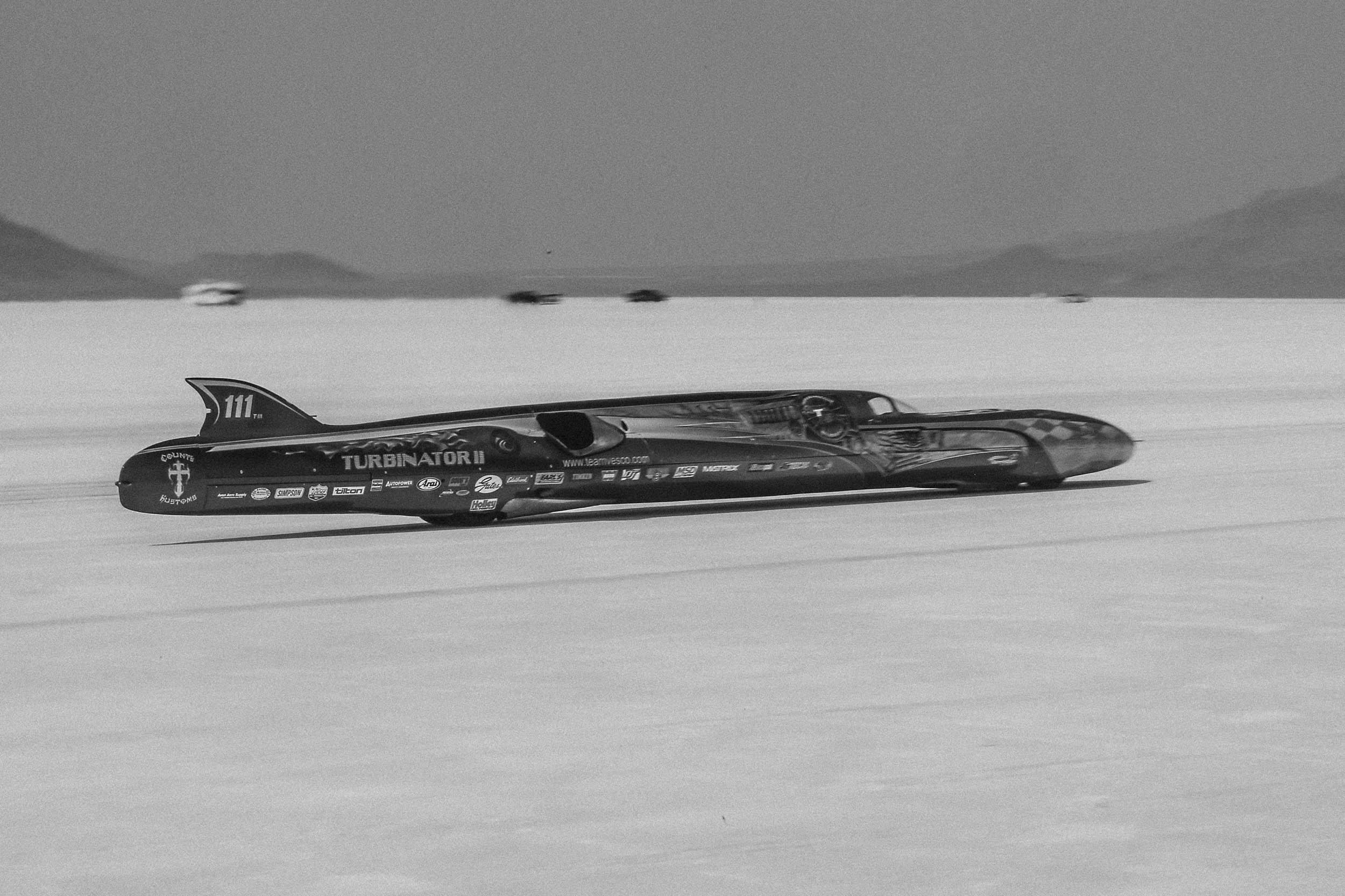Bonneville in black and white
The Bonneville Salt Flats is a special place. Significant because of its geography and the history that continues to be made there by land speed racers, Bonneville’s unique conditions make for a unique racing environment and one of the most instantly recognizable venues in motorsports. When we visited the salt for Speed Week 2018, we took more than 2000 photos, and a couple hundred of them were on 35mm black and white film. It seemed appropriate to photograph the racers and their machines in a medium that was used at the event’s inception. It was fun for us, but was it worth it?
Plenty of photographers like the romance of film. Compared to digital there’s no instant gratification and there’s always a bit of mystery as to what the darkroom will reveal. On the other hand, digital offers immediate results and flexibility that’s tough to beat. Plus it’s far cheaper. With some quick editing, digital can look a whole lot like film. Or perhaps not? Can you pick out which of the following 15 photos were taken straight from film scans and which were simply converted to black and white?

Danny Thompson recently retired the Challenger 2 streamliner originally built by his late father, Mickey Thompson. In 2018 he beat his 2016 record and increased the AA/FS record to 448.757mph.

Team Vesco’s Turbinator II streamliner recorded the fastest flying mile of Speed week with a 463-mph pass to take home the HOT ROD trophy.

Dave Spangler awaits his turn inside the cockpit of the Turbinator II.

The Challenger 2 was completely rebuilt after being put in storage in the ’60s and is a slightly longer than when it was originally built, but most of the skin is original.

The names of the original Challenger 2 builders are on one side of the car, opposite the new crew. Original builders include the late Nye Frank and Bob Skinner, as well as Skinner’s teammate on the Surfers drag team, Tom Jobe.

Many period-correct hot rods make the pilgrimage to Speed Week to be christened with a baptism of salt.

Bob Dalton checks in on fellow racer Eddie Umland as the tech inspectors validate his engine displacement. Bob runs the Flashpoint streamliner that’s powered by a detuned Top Fuel Hemi. He crashed the car at the following meet but was back on the salt the following day.

Ed Umland’s streamliner is powered by a twin-turbocharged Chevy LS engine and was one of two racers vying to put up the first gasoline record above 400 mph. A loss of coolant caused warping that stressed the head studs and on the record-setting return run the head suffered serious damage. He still came away with the A/BGS record of 369.162 mph.

The Big Red Camaro does it all. It has raced at Pikes Peak, the Silver State Classic, Mojave Mile, and on road courses across the country.

The Competition Coupe from CAL Automotive Creations is one of the coolest looking cars on the salt.

A single monster turbo feeds the LS7 in the coupe.

The two crew chiefs of the Speed Demon team streamliner, Kenny Duttweiler (left) and Steve Watt, go over some calculations prior to a run.

Kenny Duttweiler built the 443-cubic-inch Chevrolet LS V-8 that produces 2600 horsepower.

You’ll see all sorts of engines at Bonneville, as vintage classes exist for the hot rod standard Ford flathead. Less common and just as cool, you can even spot the occasional Cadillac flathead V-8.

GMC inline-sixes like this one are different engine family than the 250- and 292-cubic-inch Chevrolets that were used in ’60s cars and pickups. These 302-cu-in mills were used in the GMC deuce-and-a-half trucks after WWII and their popularity in racing spurred several aftermarket companies to build more efficient cylinders heads. This one happens to be from Arias.


